FALLEN ANGELS, DIR. WONG KAR WAI (1995)
Yue Man Square, Kwun Tong, Hong Kong
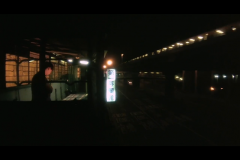
Fallen Angels (1995) is a film which encompasses crime, romance and comedy. Two almost unrelated romantic storylines interlace with each other in the same locations. The first story commences with a female who is the agent of the killer (main character), cleaning a dingy and messy room. Obsessed with the killer, she fantasizes with his objects and the place he often goes. Events in the first story take place in Yue Man Square and the places nearby Kwun Tong, including the symbolic killer’s room with the neon sign lighting. A series of events, like gambling, dining in the Cha Chaan Teng, taking the minibus, showcases the noisy nocturnal urban life as well as the traditional and modern architecture and infrastructure.
In the film, Kwun Tong is filmed as a chaotic and diversified place, filled with traditional stores and modern architecture and infrastructure after the redevelopment in the recent years. It matches with the reality and the current situation. Walter describes ‘the link between film and urban culture that has emerged in cultural history is also a function of the critical thinking on modernity.’1 The female agent and Ho Chi-mo with his father live in the same building. Various scenes in Yue Man Square shoots the desperately tiny rooms , and the unhygienic and smoky-filled gambling entertainment store which shows Kwun Tong embodies the appearance of poverty and modernity(the high-rise buildings). Matched with the reality after the redevelopment, Wong uses mise-en-scène manifest the rapid development of the city, erasing the trace of the old building and traditions. Another significant elements in the film is the infrastructure, besides the minibus, the train plays a pivotal role. It is close to the residential buildings, showing the noisy urban life without any silence at all times. Especially when the train passes by the killer’s room, breaking the silence.
In the presence of voyeuristic modernity, Wong Kar Wai used tilt shots and objects covering to narrow the frame, feeling vehement voyeurism, and producing intense ambiance when the killer is conducting his mission and the agent is scrutinizing the escaping routine. Apart from that, using ultra-wide angle to film characters’ faces with merely any dialogue and mainly all characters’ personal and emotional thoughts via narration, this filming method can magnify the facial expression of the characters and isolating the surroundings with distorted images, even in a crowded environment. One of the scene in the minibus use the ultra-wide angle to amplify the face of the killer while his classmates desires to have a conservation with him. Yet, the killer did not face with his classmates and continue look forward with a view to rejecting to interact with others and alienating himself. The objects – camcorder, fax machines, CD player, television, etc—also exhibits the modernization, meanwhile, it indicates every character encloses themselves with barely no interaction with beings and relying on those technological device to communicate. They are both physically and mentally distancing with each other.
—Yeung Po Ying, 3035923940
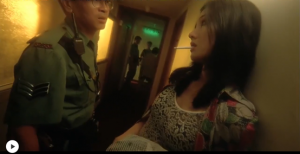
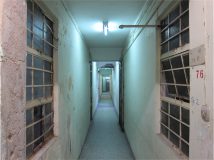
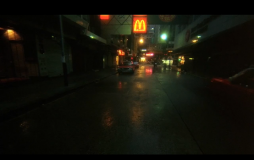
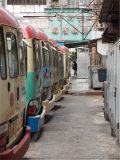
Notes:
1 Clair, R., Eisenstein, S., Benjamin, W., Lefebvre, H., Moholy-Nagy, L., & Bruno, G. (2006). Visual studies: Four takes on spatial turns. Journal of the Society of Architectural Historians 65 (1), (pp. 23-24).
2 AlSayyad, N. (2006). Voyeuristic Modernity: the Lens, the Screen and the City. In Cinematic urbanism: A history of the modern from reel to real (pp. 147-168). New York: London: Routledge.
3 The photos are taken by 王冠豪 (2017) and stated in his blog.
You have made a detailed analysis of how modernity is displayed in various ways in the film. Appreciate your in-depth analysis of selected scenes with an understanding of the setting. It is nice that you have utilized some concepts, but perhaps you may elaborate further on concepts like voyeurism as at the moment they seem a bit brief.